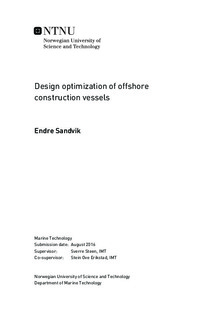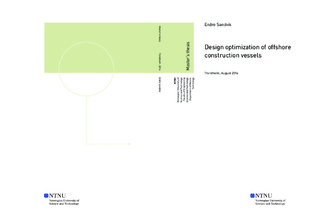| dc.description.abstract | The topic of this thesis is optimization of ship design with regards to operational performance. 4 VARD Offshore Subsea Construction Vessels are analysed to find the optimum
compromise of operability versus required power, building costs and machinery costs.
Operability is assessed with regards to subsea lifting operations using the ShipX plugin
VERES. Criteria is established for lifting phases in air, splash-zone and lowering
through the water column. Parametric variations of beam, draught, GM and radius of
gyration for roll motion is done to find their effect on operability. Required power at
transit speed for beam and draught variations is found using experimental results from
MARINTEK and the empirical method Holtrop 84. Building and machinery costs are
assessed using empirical methods.
Statistics from the North Sea and Norwegian Sea is applied to determine operability.
Results from these areas is found to differ significantly. The only parameter resulting
in consistent change in operability is the vessel length. The remaining parameters vary
in terms of their effect on operability depending on vessel and operational area. The
length is found to have the largest impact on costs, and the beam is found to be a more
cost effective parameter for increasing operability compared to draught.
It is shown that variation of beam is more difficult compared to draught if a constant GM
is required without large modifications of general arrangement. The applied methodology
of assessing operability differs from the procedure of planning and executing lifting
operations since weather windows and -factors are neglected. This lead to an overestimate
of operability represented as the expected percentage of time the vessel is capable
of performing operations. | |

